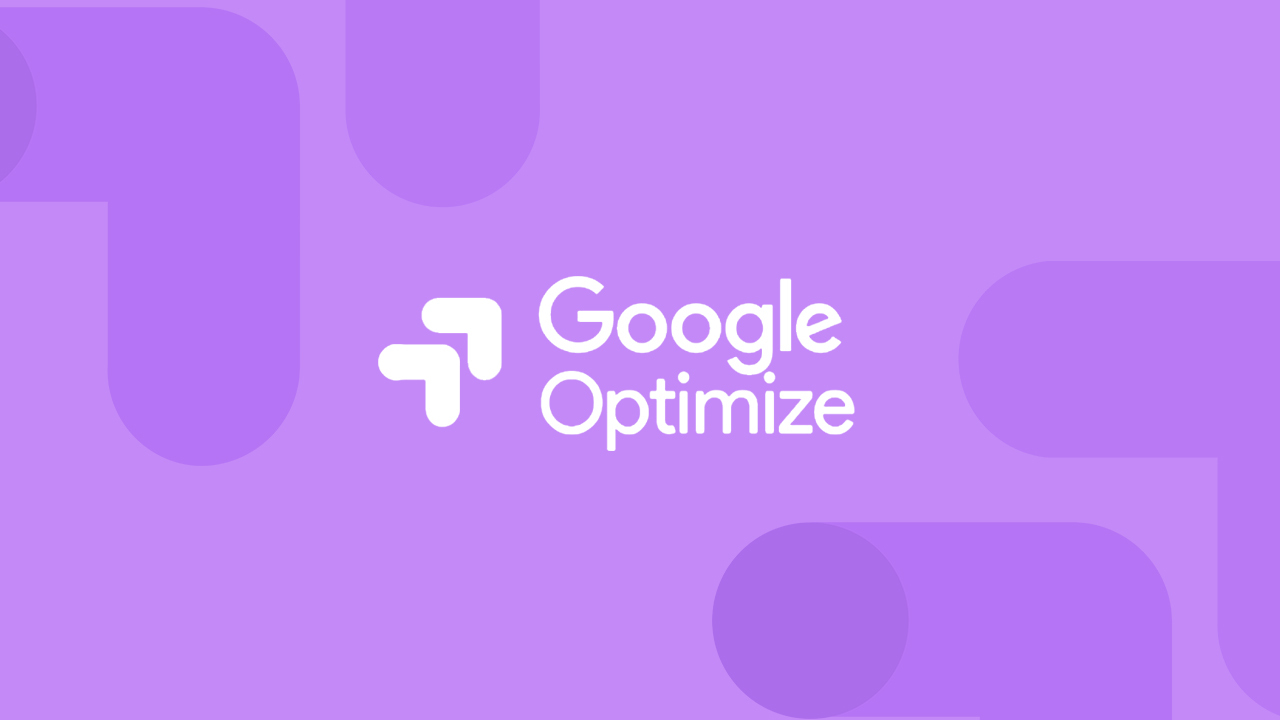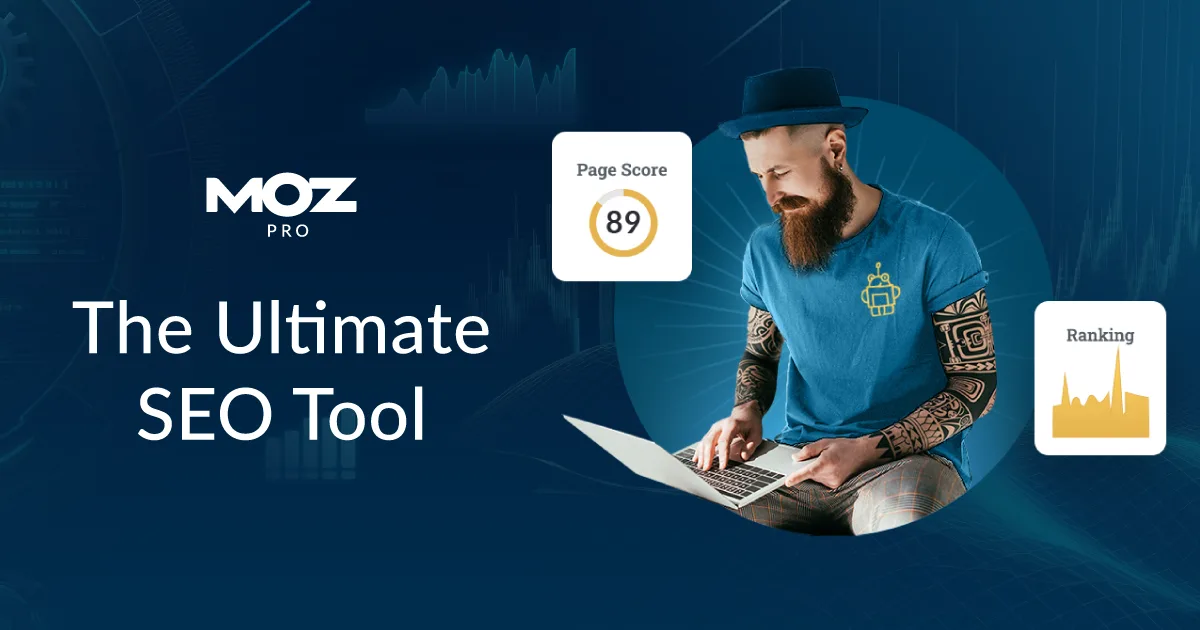In the digital marketing world, landing page SEO tactics are the gateways to conversions.
They are the first point of contact for your potential customers.
But, are your landing pages performing at their best?
Are they optimized to drive conversions and boost your business success?
If you’re unsure, you’re not alone.
Many businesses struggle with landing page SEO optimization.
This is where landing page optimization tools come into play.
These tools can help you analyze, test, and improve your landing pages.
They can provide insights into user behavior, page speed, SEO, and more.
With the right tools, you can create landing pages that not only attract visitors but also convert them into customers.
In this comprehensive guide, we will explore the top landing page optimization tools.
We will delve into their features, benefits, and how they can contribute to your success.
Whether you’re a digital marketer, an SEO specialist, or a business owner, this guide is for you.

Understanding Landing Page SEO Optimization
Before we dive into the tools, let’s first understand what landing page SEO optimization is.
Table of Contents
- 1Understanding Landing Page SEO Optimization
- 2Selecting the Right Landing Page SEO Optimization Tools
- 3Top Landing Page Tools for WordPress
- 4Top Tools for Landing Page SEO Optimization
- 5Google Optimize
- 6Mobile-Friendly Test
- 7Implementing Landing Page SEO Optimization Tools
- 8Common Mistakes and Best Practices in Landing Page Optimization
- 9Do landing pages rank on Google?
- 10Conclusion and Next Steps
It’s a process that involves improving elements on a landing page to increase conversions.
What is Landing Page Optimization?
Landing page optimization is not just about making your page look good.
It’s about making your page work effectively.
This involves tweaking and testing various elements on the page.
These elements can include headlines, images, call-to-action buttons, and forms.
The goal is to make these elements as compelling as possible.
This way, when a visitor lands on your page, they are more likely to take the desired action.
Whether that’s signing up for a newsletter, downloading a guide, or making a purchase.
Why is Landing Page Optimization Crucial for Conversions?
Landing page SEO optimization is crucial for conversions for several reasons.
First, it helps to reduce bounce rates.
When a visitor lands on your page and finds what they’re looking for, they’re less likely to leave without interacting.
Second, it helps to improve your ad Quality Score.
This can lower your cost per click and increase your ad rank.
Finally, it helps to enhance the user experience.
A well-optimized landing page is easy to navigate, visually appealing, and offers value to the visitor.
The Relationship Between Landing Page SEO and User Experience
Landing page SEO and user experience go hand in hand.
A well-optimized landing page is not only search engine friendly but also user-friendly.
It’s important to strike a balance between the two.
You want your page to rank high in search engine results.
But you also want your visitors to have a positive experience on your page.
This can lead to higher engagement, more conversions, and ultimately, more success for your business.
Selecting the Right Landing Page SEO Optimization Tools
Choosing the right landing page optimization tools can be a daunting task.
There are countless options available, each with its own set of features and benefits.
However, the key is to select tools that align with your specific needs and goals.
Criteria for Choosing Optimization Tools
When choosing optimization tools, consider the following criteria.
First, look at the features offered by the tool.
Does it offer A/B testing, heatmaps, analytics, or SEO recommendations?
Second, consider the ease of use.
A tool that’s difficult to navigate can slow down your optimization efforts.
Finally, consider the cost.
While some tools offer free versions, others can be quite pricey.
Choose a tool that fits within your budget but still offers the features you need.
Balancing SEO and User Experience in Tool Selection
When selecting tools, it’s important to balance SEO and user experience.
Some tools may be great for SEO but not so great for user experience, and vice versa.
The best tools are those that help improve both.
For instance, a tool that offers A/B testing can help you optimize for both SEO and user experience.
By testing different elements, you can see what works best for your audience and for search engines.
Remember, a well-optimized landing page is one that satisfies both your visitors and search engines.
Top Landing Page Tools for WordPress
Most Popular Options:
Elementor: A user-friendly drag-and-drop builder with a wide range of features, making it easy for beginners to create professional-looking landing pages. Offers a free version with limited features and paid plans for additional functionalities.
SeedProd: Known for its focus on landing page speed and conversion optimization. Offers a simple and intuitive interface for building high-converting landing pages. Paid plans only.
Divi: Part of the Elegant Themes package, Divi is a powerful and versatile builder with a visual editor and a wide range of design options. Offers a good balance of features and ease of use. Paid plans only.
Beaver Builder: A popular choice for developers and designers, offering a clean and code-focused interface. Paid plans only.
Thrive Architect: Created by a well-known conversion optimization company, Thrive Architect emphasizes conversion-focused features and A/B testing capabilities. Paid plans only.
OptimizePress: A well-established option with features for building landing pages, sales funnels, and opt-in forms. Paid plans only.
Top Tools for Landing Page SEO Optimization
Now that we’ve discussed the criteria for selecting optimization tools, let’s dive into some of the top tools available.
These tools fall into four main categories: A/B testing and experimentation, user behavior analysis, page speed and mobile optimization, and SEO and content analysis.
A/B Testing and Experimentation Tools
A/B testing is a crucial part of landing page SEO optimization.
It allows you to test different versions of your landing page to see which one performs better.
Optimizely
Optimizely is a leading A/B testing tool.
It allows you to easily create and run experiments on your landing page.
With Optimizely, you can test different headlines, images, and call-to-action buttons to see which ones drive more conversions.
VWO (Visual Website Optimizer)
VWO is another popular A/B testing tool.
It offers a user-friendly interface and a variety of features, including heatmaps and visitor recordings.
These features allow you to gain deeper insights into how visitors interact with your landing page.
Google Optimize
Google Optimize is a free tool that integrates with Google Analytics.
It allows you to run A/B, multivariate, and redirect tests on your landing page.
With Google Optimize, you can use your Analytics data to create more targeted experiments.

User Behavior Analysis Tools
Understanding how users interact with your landing page is key to optimization.
User behavior analysis tools can provide valuable insights into this.
Hotjar
Hotjar is a user behavior analysis tool that offers heatmaps, session recordings, and surveys.
These features allow you to see how users navigate your landing page and where they encounter issues.
Crazy Egg
Crazy Egg is another user behavior analysis tool.
It offers heatmaps, scroll maps, and A/B testing features.
With Crazy Egg, you can visualize where users click, scroll, and spend time on your landing page.
Mouseflow
Mouseflow is a tool that offers session replay, heatmaps, funnels, and forms.
It allows you to watch how users interact with your landing page in real-time.
This can help you identify any usability issues that may be hindering conversions.
Page Speed and Mobile Optimization Tools
Page speed and mobile optimization are crucial for both SEO and user experience.
There are several tools available that can help you analyze and improve these aspects.
Google PageSpeed Insights
Google PageSpeed Insights is a free tool that analyzes the content of a web page and generates suggestions to make it faster.
It provides both mobile and desktop speed scores, along with optimization recommendations.
GTmetrix
GTmetrix is a tool that provides insights into how well your site loads and provides actionable recommendations on how to optimize it.
It offers a comprehensive suite of features including waterfall breakdown, video playback, and performance scores.
Mobile-Friendly Test
Google’s Mobile-Friendly Test is a tool that checks how easily a visitor can use your page on a mobile device.
It simply requires you to enter a URL to test, and it will provide a report on the page’s mobile usability.

SEO and Content Analysis Tools
SEO and content analysis tools can help you optimize your landing page for search engines.
These tools can provide keyword suggestions, backlink analysis, and content optimization recommendations.
Ahrefs
Ahrefs is a comprehensive SEO tool that offers keyword research, backlink analysis, and content analysis features.
It can help you identify opportunities for SEO improvement on your landing page.
SEMrush
SEMrush is another popular SEO tool.
It offers features for SEO, PPC, content, social media, and competitive research.
With SEMrush, you can optimize your landing page for both organic and paid search.
Moz Pro
Moz Pro is an all-in-one SEO toolset.
It offers features for keyword research, SEO audit and crawl, backlink analysis, and rank tracking.
With Moz Pro, you can optimize your landing page for higher search engine rankings.

Implementing Landing Page SEO Optimization Tools
Once you’ve selected the right landing page SEO optimization tools the next step is implementation.
This involves integrating these tools with your existing marketing stack and using the data they provide to make informed decisions.
Integrating Landing Page Optimization Tools with Your Marketing Stack
Most landing page optimization tools can be easily integrated with other marketing software.
For instance, A/B testing tools can be integrated with your email marketing software to test different email variations.
Similarly, user behavior analysis tools can be integrated with your analytics software to provide deeper insights into user behavior.
Interpreting Data and Making Informed Decisions
The data provided by landing page optimization tools is only useful if you know how to interpret it.
For instance, heatmaps can show you where users are clicking on your landing page, but it’s up to you to determine why they are clicking there and how you can optimize this behavior for better conversions.
Similarly, A/B testing tools can show you which version of your landing page performs better, but you need to understand why this is the case and how you can apply these insights to other areas of your marketing.
Common Mistakes and Best Practices in Landing Page Optimization
Landing page optimization is a delicate process.
It’s easy to make mistakes that can negatively impact your conversion rates.
Top Mistakes to Avoid
One common mistake is not testing different landing page elements.
Many marketers make changes based on gut feelings rather than data, which can lead to suboptimal results.
Another mistake is ignoring mobile optimization.
With more than half of web traffic coming from mobile devices, it’s crucial to ensure your landing pages are mobile-friendly.
Best Practices for Maximum Conversion Rates
On the other hand, there are several best practices you can follow to maximize your conversion rates.
First, always use clear and compelling calls to action.
Your visitors should know exactly what action you want them to take.
Second, keep your landing pages simple and focused.
Too many elements can distract visitors and reduce conversions.
Finally, always be testing.
The more you test, the more you learn about your audience and the better you can optimize your landing pages for conversions and use the right landing page optimiziation tools for this purpose.
Do landing pages rank on Google?
Yes, landing pages can rank on Google search results. To improve the chances of your landing pages ranking well, you should optimize them for relevant keywords, ensure they provide valuable content to users, and have a good user experience.
Additionally, building backlinks to your landing pages from reputable websites can also help improve their search engine rankings.
How Do I Write an SEO-Friendly Landing Page?
Here are some key steps to writing an SEO-friendly landing page:
Target Audience and Keyword Research:
Identify your target audience: Who are you trying to reach with your landing page? Understanding their needs and search intent is crucial.
Keyword research: Research relevant keywords that your target audience is likely to use when searching for products or services you offer. Tools like Google Keyword Planner or SEMrush can help with this process.
On-Page Optimization:
Compelling Headline: Craft a clear, concise, and attention-grabbing headline that incorporates your target keyword.
Relevant Content: Create high-quality content that is informative, engaging, and directly addresses the user’s search intent. Use keywords naturally throughout the content, but avoid keyword stuffing.
Meta Description: Write a compelling meta description that summarizes the landing page’s content and entices users to click. Include the target keyword naturally within the description.
Image Optimization: Use high-quality images relevant to your content and optimize them with descriptive alt text containing your target keyword.
Internal Linking: Link to relevant internal pages on your website to improve user experience and website navigation.
Technical SEO:
Mobile-friendliness: Ensure your landing page is mobile-responsive and provides a good user experience on all devices.
Page Speed: Optimize your landing page for fast loading speed, as this is a significant ranking factor for search engines. Tools like GTmetrix or Google PageSpeed Insights can help identify areas for improvement.
Structured Data (Optional): Consider implementing relevant structured data markup to provide search engines with additional information about your landing page’s content, potentially leading to richer search results.
Call to Action (CTA):
Include a clear and strong call to action (CTA) that tells users what you want them to do next, whether it’s making a purchase, signing up for a newsletter, or downloading a white paper.
Here are some additional tips:
Focus on user experience: Create a landing page that is easy to navigate and provides value to the user.
Unique Selling Proposition (USP): Clearly communicate your USP and what makes your offer different from competitors.
Benefit-driven content: Highlight the benefits your product or service offers to the user.
Social proof: Include testimonials, case studies, or customer reviews to build trust and credibility.
Track and analyze: Use website analytics tools to track the performance of your landing page and make data-driven decisions for improvement.
Conclusion and Next Steps
Landing page optimization is a journey, not a destination.
It requires continuous testing, learning, and improvement to maximize your conversion rates.
Setting Measurable Goals for Continuous Improvement
Start by setting clear, measurable goals for your landing page optimization efforts.
These goals will guide your testing and help you measure your progress over time.
Keeping Up with Landing Page Trends and Tools
Finally, keep up with the latest trends and landing page optimization tools.
The digital marketing landscape is always changing, and staying informed will help you stay ahead of the competition.
How long should a landing page be for SEO?
Landing page length for SEO isn't a direct factor. Google prioritizes content relevance and quality over word count. However, there are some key considerations:
Conversion Optimization: Landing pages are primarily designed to drive conversions, not necessarily rank high in search results. Focus on clear, concise content that guides users towards the desired action.
Informative & Engaging: While short and sweet is often ideal, some landing pages might require more content to adequately explain complex products or services.
User Experience: Prioritize user experience. Lengthy content can overwhelm visitors, so ensure the information is scannable and easy to digest.
Here's a breakdown of landing page length approaches:
Short & Sweet (300-500 words): Ideal for simple offers or products with clear value propositions.
Mid-Length (500-1000 words): Suitable for more complex products or services requiring detailed explanations.
Long-Form (1000+ words): May be necessary for landing pages targeting highly researched purchases or B2B solutions.
Here are some SEO best practices for landing pages, regardless of length:
Target Relevant Keywords: Include relevant keywords throughout the content, but avoid keyword stuffing.
Optimize Title Tags & Meta Descriptions: Craft compelling titles and descriptions that accurately reflect the landing page content and encourage clicks.
Mobile-Friendly Design: Ensure your landing page offers a seamless experience on mobile devices.
Fast Loading Speed: Prioritize quick loading times to avoid user frustration and potential SEO penalties.
How do I create a local landing page for SEO?
Landing page length for SEO isn't a direct factor. Google prioritizes content relevance and quality over word count. However, there are some key considerations:
Conversion Optimization: Landing pages are primarily designed to drive conversions, not necessarily rank high in search results. Focus on clear, concise content that guides users towards the desired action.
Informative & Engaging: While short and sweet is often ideal, some landing pages might require more content to adequately explain complex products or services.
User Experience: Prioritize user experience. Lengthy content can overwhelm visitors, so ensure the information is scannable and easy to digest.
Here's a breakdown of landing page length approaches:
Short & Sweet (300-500 words): Ideal for simple offers or products with clear value propositions.
Mid-Length (500-1000 words): Suitable for more complex products or services requiring detailed explanations.
Long-Form (1000+ words): May be necessary for landing pages targeting highly researched purchases or B2B solutions.
Why do I need a landing page if I have a website?
While you already have a website, a landing page serves a specific purpose that your website might not perfectly fulfill. Here's why landing pages are valuable additions:
Focused Goal: Landing pages are laser-focused on a single objective, like capturing leads, promoting a specific product, or driving sales for a limited-time offer. Your website, on the other hand, has broader goals and caters to various user interests.
Conversion Optimization: Landing pages are designed with conversion optimization in mind. They typically have minimal distractions, clear calls to action, and persuasive content tailored to a specific audience. Websites often have more navigation options and cater to a wider range of user goals, potentially leading to less focused conversions.
Targeted Traffic: Landing pages are often paired with targeted marketing campaigns (e.g., ads, social media promotions) that drive traffic specifically interested in the promoted offer. Your website receives organic traffic and visitors browsing for various information
Do landing pages affect SEO?
Landing pages can indirectly affect SEO, but they aren't a direct ranking factor themselves. Here's how they can influence your SEO:
Positive Impacts:
Targeted Keywords: Landing pages allow you to target specific keywords with relevant content, potentially improving your ranking for those terms in search results.
User Engagement & Bounce Rate: High-quality landing pages that engage users and encourage them to stay on the page can contribute to a lower bounce rate, which is a positive SEO signal.
Website Content Depth: Landing pages with valuable content relevant to your website's overall theme can increase the depth and comprehensiveness of your website, potentially improving its ranking.
Backlinks: If your landing page offers valuable content or a great promotion, it might attract backlinks from other websites, which is a strong SEO ranking factor.
Potential Downsides:
Thin Content: Some landing pages might have minimal content to keep them focused. While good for conversion rates, this can be negative for SEO if the content doesn't provide enough value for search engines.
Duplicate Content: Be mindful of duplicate content issues. If your landing page content is very similar to existing website pages, it might not be crawled and indexed effectively.
How successful are landing pages?
The success of landing pages can vary depending on several factors, but here's a general breakdown:
Average Landing Page Conversion Rate: Across all industries, the average landing page conversion rate is around 2.35%. However, effective landing pages can achieve significantly higher rates, exceeding 5% or even 10%.
Factors Affecting Success: Conversion rates depend on various elements like landing page design, content quality, offer relevance to the target audience, and the clarity of your call to action (CTA).
Importance of A/B Testing: Continuously testing and optimizing different elements of your landing page can significantly improve its conversion rate.
Here are some additional insights on landing page success:
High-performing landing pages are laser-focused on a single goal. They avoid distractions and keep the user journey clear and concise.
Compelling headlines and strong visuals are crucial for grabbing user attention and conveying value propositions quickly.
Landing pages should be mobile-friendly to cater to the growing mobile browsing trend.
